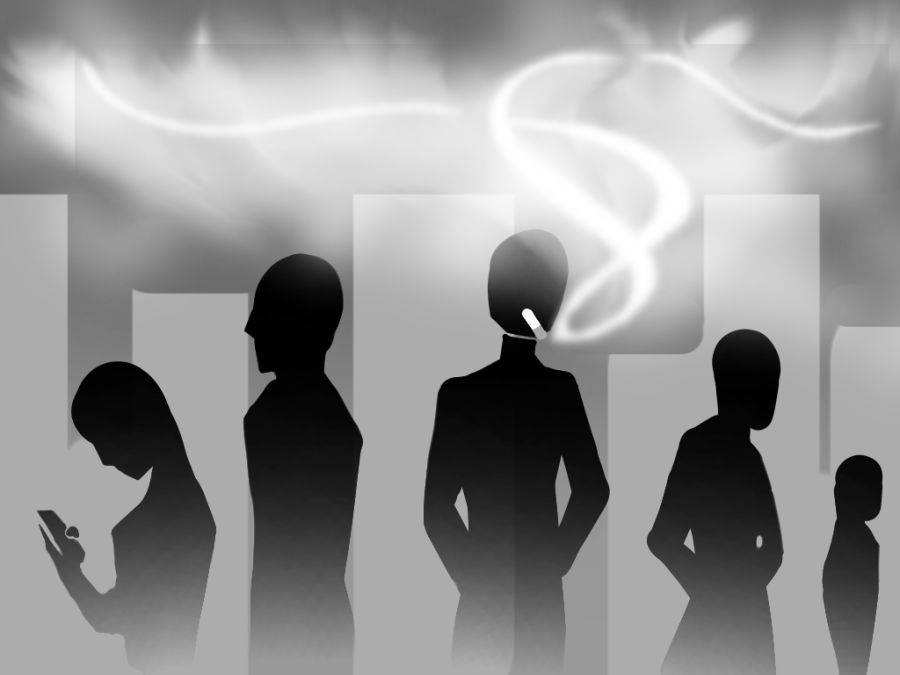Where There’s Smoke, There’s… Students?
Despite Sweden’s praiseworthy statistics of low smoking rates, it appears to be a major problem surrounding our school.
More stories from Gaëlle B.
Illustration by Gaëlle B.
I think we all, at some point in our lives, have been informed by parents, teachers or media that smoking – and by extension, secondhand smoking – is bad. Studies on the physical and mental effects of smoking pop up every few months – the most recent of which, published by Guan Qiangdong et al. in the Journal of Affective Disorders around two months ago, showed that adolescents exposed to secondhand smoke are particularly at risk of “loneliness, sleeplessness and suicidal ideation” (Guan et al., 2022), shocking few. Despite the ubiquity of the idea that smoking is harmful, I have yet to get through a school day without studying air currents like an ancient mariner to stay upwind of someone’s smoke trail while travelling between classes or to lunch. This happens multiple times a day, concentrated around the OPG area.
If you look at Sweden’s statistics on smoking prevalence, my complaints about frequent encounters with smokers could appear to be unfounded. After all, Sweden is regarded as a model of sorts, with the tenth lowest smoking rate in the world as declared by the World Population Review in January 2022. However, my reasoning for the disproportionate amount of smokers we students encounter boils down to two central causes: our location, and our school’s structure.
Our current school buildings are in Norrmalm, A.K.A. smack in the middle of the city, where offices and shops are concentrated. Alongside the fact that smoke breaks are a frequent and valued part of Stockholm office life, in particular, we can understand that we just happen to be in the central smoking hotspot of the whole municipality.
We also know that SIS is currently spread out across four separate buildings, meaning that most students have to walk through this section of the city regularly in order to reach their classes or have lunch. The Swedish smoking ban does not cover the public outdoors, making it the most prominent exception that smokers can flock to. In simpler terms, our school’s spread-out structure makes us particularly vulnerable to secondhand smoke exposure.
The school’s current plan to relocate into one building will eliminate the second of these underlying causes, minimising the time students spend in smoke-concentrated areas while still offering reasonable smoke-free outdoor space via the new school grounds. However, the new space is still in the immediate vicinity of OPG, meaning a solution to the first underlying cause is still needed. Perhaps communication between the school and the Stockholm municipal government could call for a smoke-free radius around the school grounds. More realistically, the school can encourage students to walk in open air or further away from groups of adults when leaving the school grounds, as a way to reduce secondhand smoke exposure.
The availability of smokeless tobacco products like Snus (banned in most EU countries) likely accounts for Sweden’s low smoking prevalence. While this means that people can still get the satisfaction of tobacco without harming those around them, the larger fact remains unchanged – they, like most of the world, still remain in the grip of nicotine.


